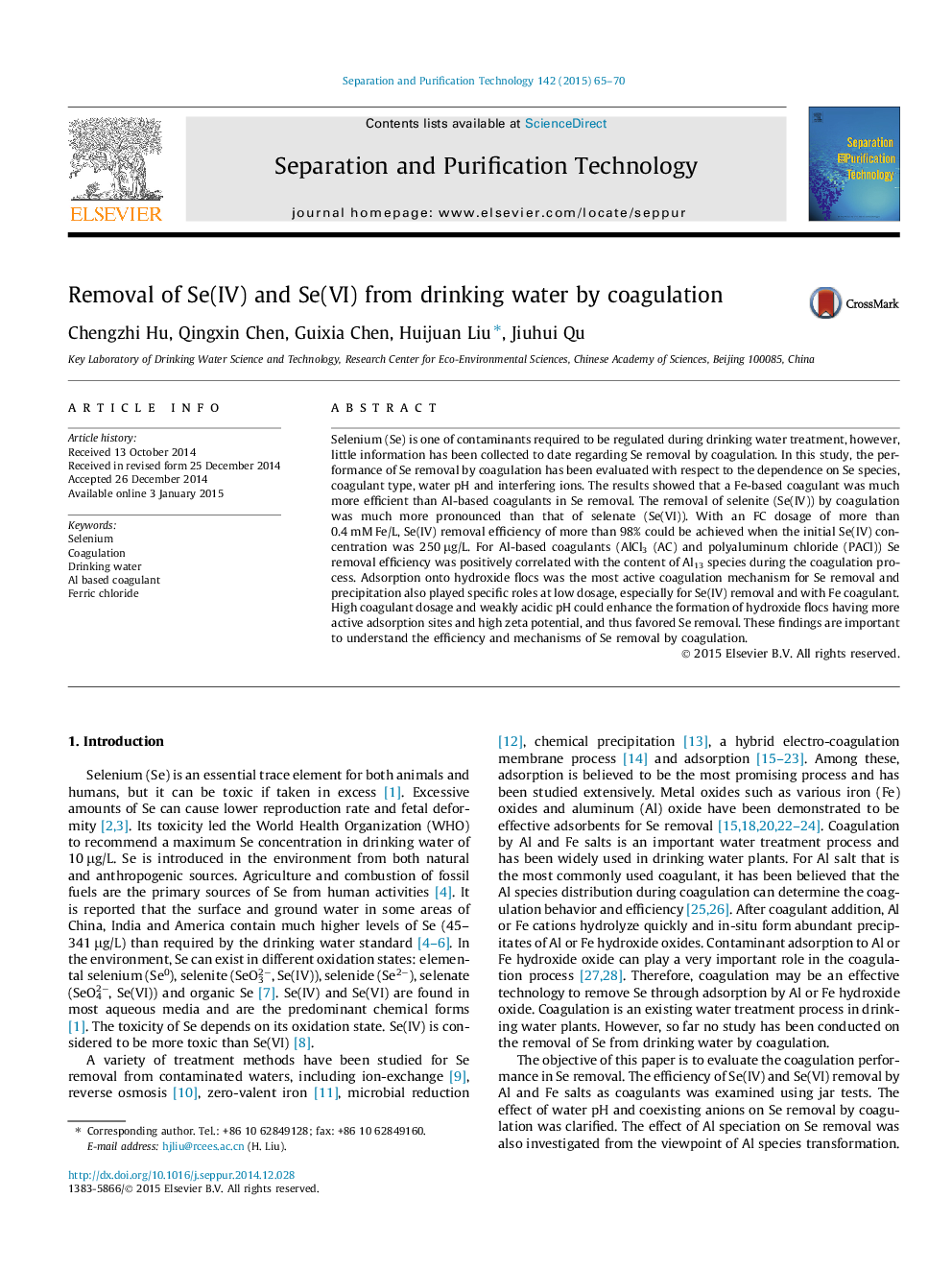| کد مقاله | کد نشریه | سال انتشار | مقاله انگلیسی | نسخه تمام متن |
|---|---|---|---|---|
| 640793 | 1456977 | 2015 | 6 صفحه PDF | دانلود رایگان |

• FeCl3 was much more efficient than AlCl3 on Se removal.
• Se(IV) removal by coagulation was more pronounced than Se(VI).
• Adsorption onto flocs was the most active coagulation mechanism.
• Iron salt was a reliable coagulant for Se(IV) removal.
Selenium (Se) is one of contaminants required to be regulated during drinking water treatment, however, little information has been collected to date regarding Se removal by coagulation. In this study, the performance of Se removal by coagulation has been evaluated with respect to the dependence on Se species, coagulant type, water pH and interfering ions. The results showed that a Fe-based coagulant was much more efficient than Al-based coagulants in Se removal. The removal of selenite (Se(IV)) by coagulation was much more pronounced than that of selenate (Se(VI)). With an FC dosage of more than 0.4 mM Fe/L, Se(IV) removal efficiency of more than 98% could be achieved when the initial Se(IV) concentration was 250 μg/L. For Al-based coagulants (AlCl3 (AC) and polyaluminum chloride (PACl)) Se removal efficiency was positively correlated with the content of Al13 species during the coagulation process. Adsorption onto hydroxide flocs was the most active coagulation mechanism for Se removal and precipitation also played specific roles at low dosage, especially for Se(IV) removal and with Fe coagulant. High coagulant dosage and weakly acidic pH could enhance the formation of hydroxide flocs having more active adsorption sites and high zeta potential, and thus favored Se removal. These findings are important to understand the efficiency and mechanisms of Se removal by coagulation.
Figure optionsDownload as PowerPoint slide
Journal: Separation and Purification Technology - Volume 142, 4 March 2015, Pages 65–70